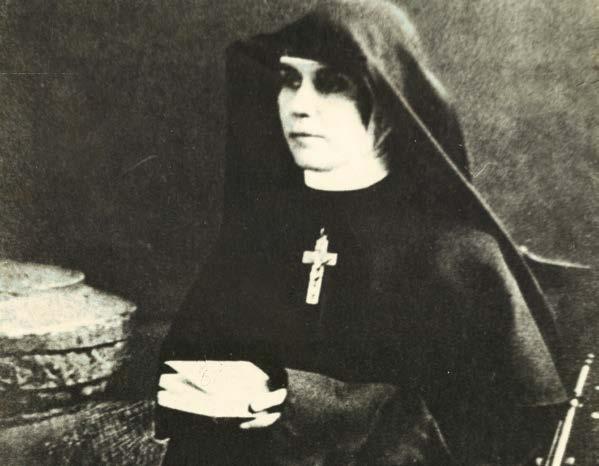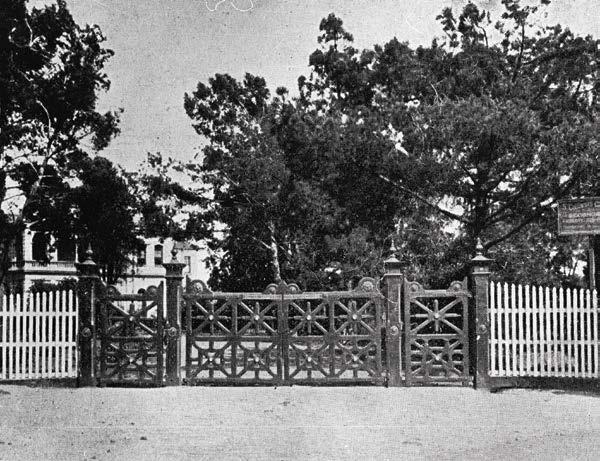
3 minute read
Sisters of Charity
FAITHFUL contemporary INNOVATIVE


Mother Ursula Bruton (Top left), Original front entrance of the College (Top right), Junior students in the converted stable classroom (Bottom).
This year we remember the Sisters of Charity who came to Essendon and saw a need to provide educational opportunities for young women, at a time when educating women was not seen as necessary. Their pioneering spirit has continued at St Columba’s College for 125 years, where we still hold true to the vision of being a community that is Faithful, Contemporary and Innovative.
Maria and Ursula
Maria and Ursula, two names of one woman, whose determination gave us St Columba’s, and whose spirit lives on in our College.
Maria Bruton Maria Bruton was born in 1842 in Ireland, she emigrated with her parents and siblings to Australia in 1863. Maria trained as a teacher in Wollongong and taught in public schools until 1876, when she took a position at St Mary’s Cathedral School and was quickly promoted to Headmistress in 1879.
Sister Ursula On 4 May 1882, Maria and her sister Ellen entered the Sisters of Charity Novitiate (later four of their nieces would also enter the Sisters of Charity Novitiate), receiving their religious habits on 8 July 1882 and from then on, were known as Sister Ursula and Sister Cecilia. The choice of patron, Saint Ursula, was apt, as she was regarded as the patroness of the education of young girls.
As a skilled teacher, Sister Ursula was a godsend. It was a time where state aid was being removed from denominational schools and religious people were required to fill places left vacant. Sister Ursula was placed in charge of the existing primary school, St Vincent’s Potts Point. She instantly saw a need, and within four years established a secondary school, erected a new building and began accepting boarders. Under her leadership, St Vincent’s College was recognised as one of the greatest educational centres in Australia.
Mother Ursula Meanwhile in Essendon, St Monica’s Church School was blessed and opened by Archbishop Goold on 25th April 1880. In 1895, Father Nelan expressed an interest in introducing teaching nuns into the parish. After negotiating with the Sisters of Charity, three Sisters took charge of St Monica’s in 1896 and would travel each day from St Vincent’s Hospital in Fitzroy.
In 1897, a more conveniently located temporary convent was set up in a house on Mt Alexander Road, known as Garryowen, and Sister Ursula Bruton travelled from Potts Point to be the superior, taking on the title Mother Ursula Bruton. Educating Essendon The Sisters, being now in close proximity to St Monica’s, were able to devote more time and energy to the school and their students. Just like in Potts Point, Mother Ursula saw the need for a secondary school to support the on-going education of girls in the parish. With the support of parents and the wider parish, the idea of a Catholic Girls’ school began to grow.
In April of 1897, Mother Ursula secured the purchase of the Gillespie mansion (now Bruton Building) for 4,150 pounds. The Sisters relocated to the mansion and on Tuesday 13th July 1897, the doors were thrown open and the first St Columba’s College students were welcomed by Mother Ursula, as the founding Principal.
Legacy Sadly, Mother Ursula would not see St Columba’s flourish. She died suddenly on 4th November 1899, at the age of 54. She was the first Sister of Charity to be interred in the Melbourne Cemetery.
Mother Ursula Bruton was a highly educated woman of deep faith with a spirit for innovation. Her vision for girls’ education lives on in the two secondary schools that she pioneered, St Vincent’s College Potts Point and St Columba’s College Essendon. Her determination to provide educational opportunities paved the way for future St Columba’s College Principals and teachers to build a community of strong, future-focused, faithful and just women.
A Seed that Grew, the story of St Columba’s College by Sr Josephine Cannell RSC and History of St Columba’s College 1897-2012 by Sr Angela Burke RSC.






